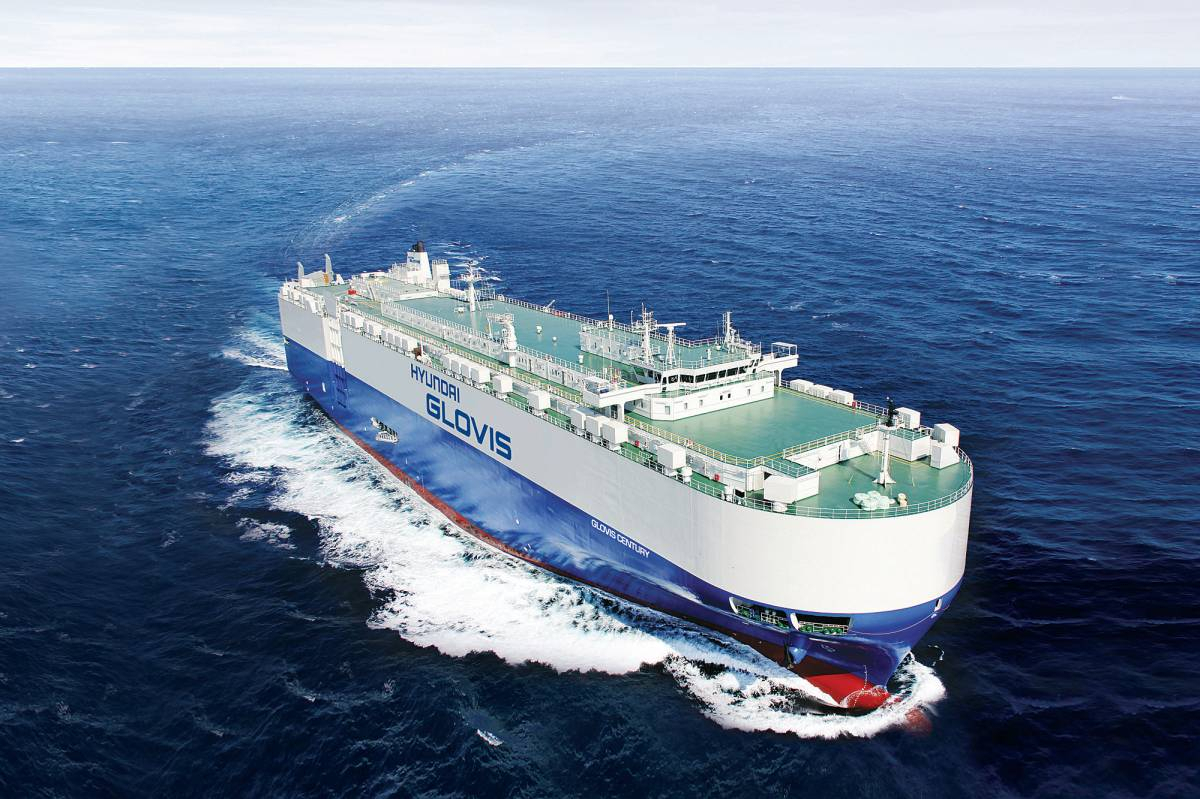
 |
| The "Glovis Century," a vehicle carrier launched in 2012 by Hyundai Glovis, in maritime operation (Hyundai Glovis) |
Hyundai Glovis, South Korea's sole provider of pure car and truck carriers, is expected to increase its global presence as charter rates for automobile-carrying vessels continue to remain high due to a persistent shortage of ships in the global maritime transportation market.
According to data from Clarksons Research on Thursday, a UK-based shipping market analysis firm, the average daily charter rate for a 6,500-Car Equivalent Unit (CEU) carrier in the third quarter of this year reached approximately $105,000. This is a dramatic increase, about five times higher than the average annual rate of around $20,000 recorded in 2020 and 2021, before the COVID-19 pandemic.
Prices have spiraled because there are only around 750 dedicated car carriers in operation globally, which is not enough to meet increased demand for transportation.
The situation is compounded by the small number of players in the global car carrier market, which limits the slack in the system and gives existing carriers more pricing power.
Shipping companies have been ordering new car carriers, but these vessels typically take two to three years to build. This means that the current shortage is likely to persist in the near term.
Hyundai Glovis stands to benefit from these market conditions as the only Korean car carrier company. The company plans to capitalize on the tight market by expanding its fleet through substantial investments.
Currently operating 81 car carriers as of early this year, Hyundai Glovis has announced plans to increase its fleet to 110 ships by 2027. This expansion strategy is expected to not only enhance its shipping capacity but also boost its profitability in the long term.
Hyundai Glovis is also looking to grow its customer base beyond Hyundai Motor Group, its parent company.
The company has already shown robust financial growth this year. In the second quarter, the company reported an operating profit of 439 billion won ($330 million) on sales of 7.64 trillion won. This represents year-on-year increases of 8.1 percent and 6.5 percent, respectively. In fact, the revenue for this quarter was the highest second-quarter figure in the company’s history.
For the full year, Hyundai Glovis aims to achieve sales of 26 trillion won to 27 trillion won and operating profit of 1.6 trillion won to 1.7 trillion won.
Industry experts expect the demand for maritime transportation of automobiles to remain strong, particularly as export volumes continue to rise from the Far East.
"For automobile exports, there is no viable alternative to maritime transport. The shortage of car carriers will likely continue for some time, providing Hyundai Glovis with a favorable environment for growth," a Korean shipping industry insider noted.









